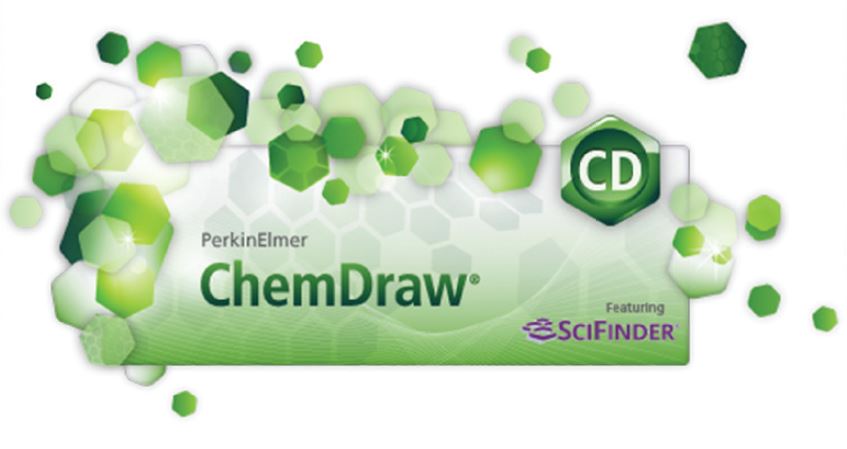
Chemdraw
chemdraw; chemical structure; chemical bonding; synthesis methodology
Description:
In the field of chemistry, materials science, biochemistry, and pharmaceuticals, accurate representation of chemical structures and reactions is essential for both communication and research. ChemDraw, developed by PerkinElmer Informatics, is the gold standard software for creating and editing chemical structure diagrams. Widely adopted by academic institutions, research laboratories, and publishing houses, ChemDraw plays a central role in preparing publication-ready chemical drawings, reaction schemes, spectral annotations, and structure-property relationships.
ChemDraw is more than just a drawing tool—it is an intelligent, chemistry-aware platform that interprets and manipulates molecular structures with scientific precision. The software supports IUPAC nomenclature, calculates molecular properties, predicts NMR spectra, and can generate systematic names and SMILES/InChI representations. As part of the ChemOffice suite or as a standalone application, ChemDraw integrates seamlessly into the scientific workflow for researchers working in organic synthesis, drug design, polymer science, or any chemistry-related discipline.
Core Capabilities and Structure Editing
At its core, ChemDraw offers an intuitive interface for drawing:
-
Organic and inorganic molecules
-
Reaction schemes with electron-pushing arrows
-
Peptides, nucleotides, and polymers
-
Organometallic complexes and coordination compounds
Users can easily construct molecules using pre-built templates or atom-by-atom customization. The software automatically enforces correct chemical valency, assigns hybridization states, and supports stereochemistry including wedges, hashes, and 3D perspective. It allows for:
-
Clean-up of drawn structures to optimize geometry
-
Labeling of atoms, charges, lone pairs, and isotopes
-
Drawing reaction arrows, curved electron flow arrows, and mechanism steps
This chemical intelligence ensures that structures are not only visually clear but chemically correct, making ChemDraw an essential tool for research documentation and academic publishing.
Applications in Research and Education
ChemDraw is extensively used across chemistry subfields:
-
In organic chemistry, it is used to depict multistep synthetic routes, transition states, and reaction mechanisms.
-
In medicinal chemistry, researchers use ChemDraw to design drug candidates, annotate SAR (structure–activity relationship) diagrams, and generate chemical identifiers for database searches.
-
In materials science, complex polymers, coordination networks, and nanostructures can be constructed and exported to molecular modeling software.
-
In biochemistry, users draw peptides, carbohydrates, and DNA fragments using built-in bio-tools.
ChemDraw enhances research presentations and publications by enabling clean, accurate visuals suitable for high-impact journals. Most publishers, such as ACS, RSC, and Elsevier, recommend or require structure figures created using ChemDraw due to its standardized formatting and compatibility.
Advanced Features and Integration
Beyond drawing, ChemDraw offers powerful analytical and predictive tools:
-
IUPAC Name Generator: Converts drawn structures into systematic chemical names.
-
NMR Prediction: Predicts ¹H and ¹³C NMR spectra with chemical shift values based on structure.
-
Property Calculation: Calculates molecular formula, exact mass, molecular weight, logP, H-bond donors/acceptors, and polar surface area.
-
SMILES, InChI, and MOL Export: Facilitates structure exchange with databases and modeling tools.
ChemDraw also integrates with Chem3D for molecular modeling, Excel for chemical spreadsheet management, and third-party platforms like SciFinder, Reaxys, and PubChem via structure-based search. These integrations allow researchers to transition smoothly between chemical drawing, property prediction, literature review, and computational modeling.
Extra Benefits for Researchers and Educators
Some additional advantages of ChemDraw include:
-
Templates for Lab Reports and Mechanisms: Saves time when preparing academic documents.
-
Customizable Hotkeys: Allows faster structure creation and formatting.
-
High-resolution Export: For journal-ready TIFF, EPS, or SVG images.
-
Structure Searching and Matching: Useful in chemical inventory and reaction databases.
-
Educational Tools: Visualizing resonance, acid-base interactions, or reaction pathways for classroom teaching.
ChemDraw is also accessible via ChemDraw Cloud, enabling cross-platform access (Windows, Mac, browser) and collaboration in remote or hybrid research environments.
Conclusion
ChemDraw remains the most widely trusted chemical drawing software, offering unmatched precision, clarity, and intelligence in the representation of molecular structures and reactions. Its role extends from the lab bench to the lecture hall, from student reports to professional journal publications. For researchers and educators alike, ChemDraw is not just a tool—it is a cornerstone of modern chemical communication.